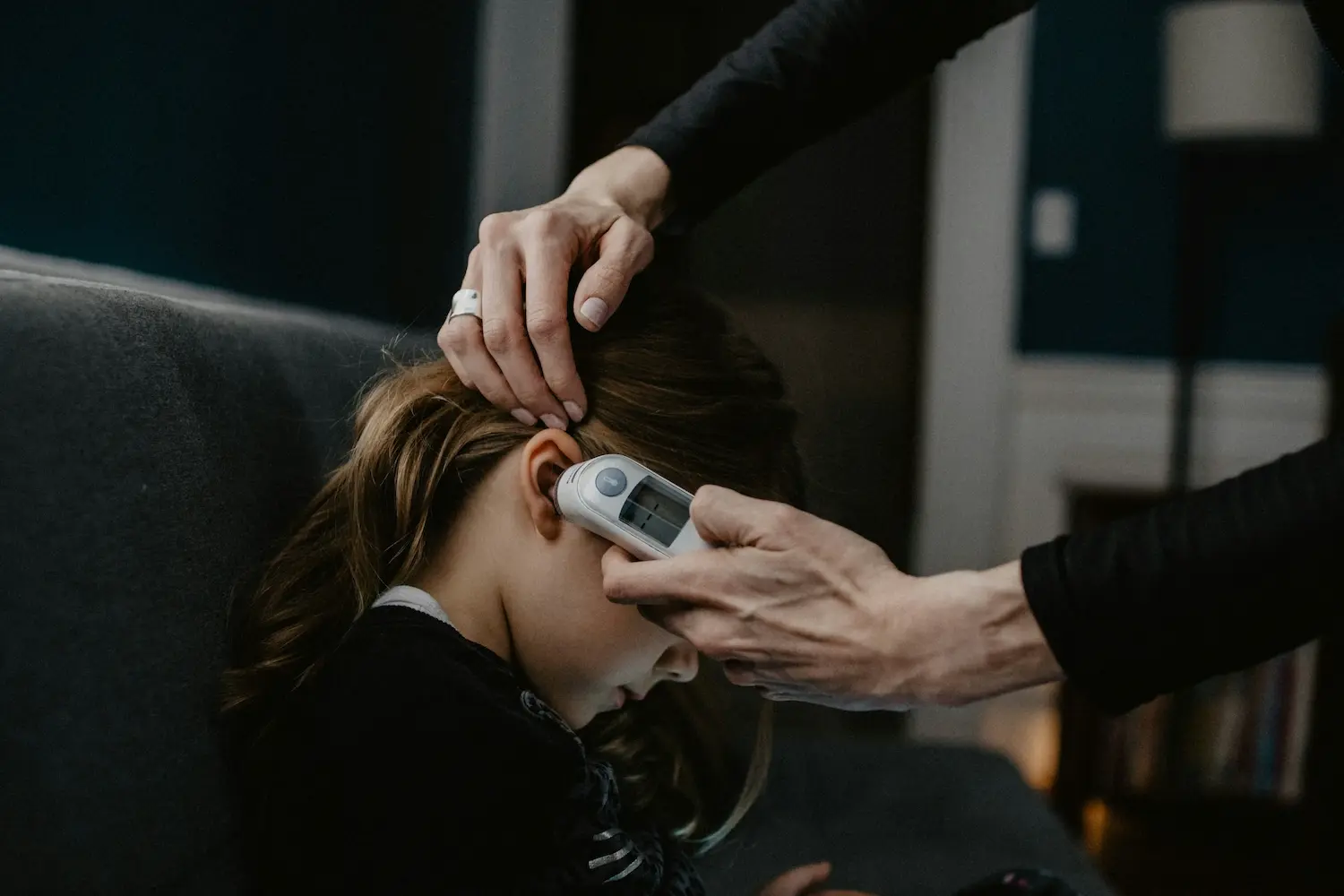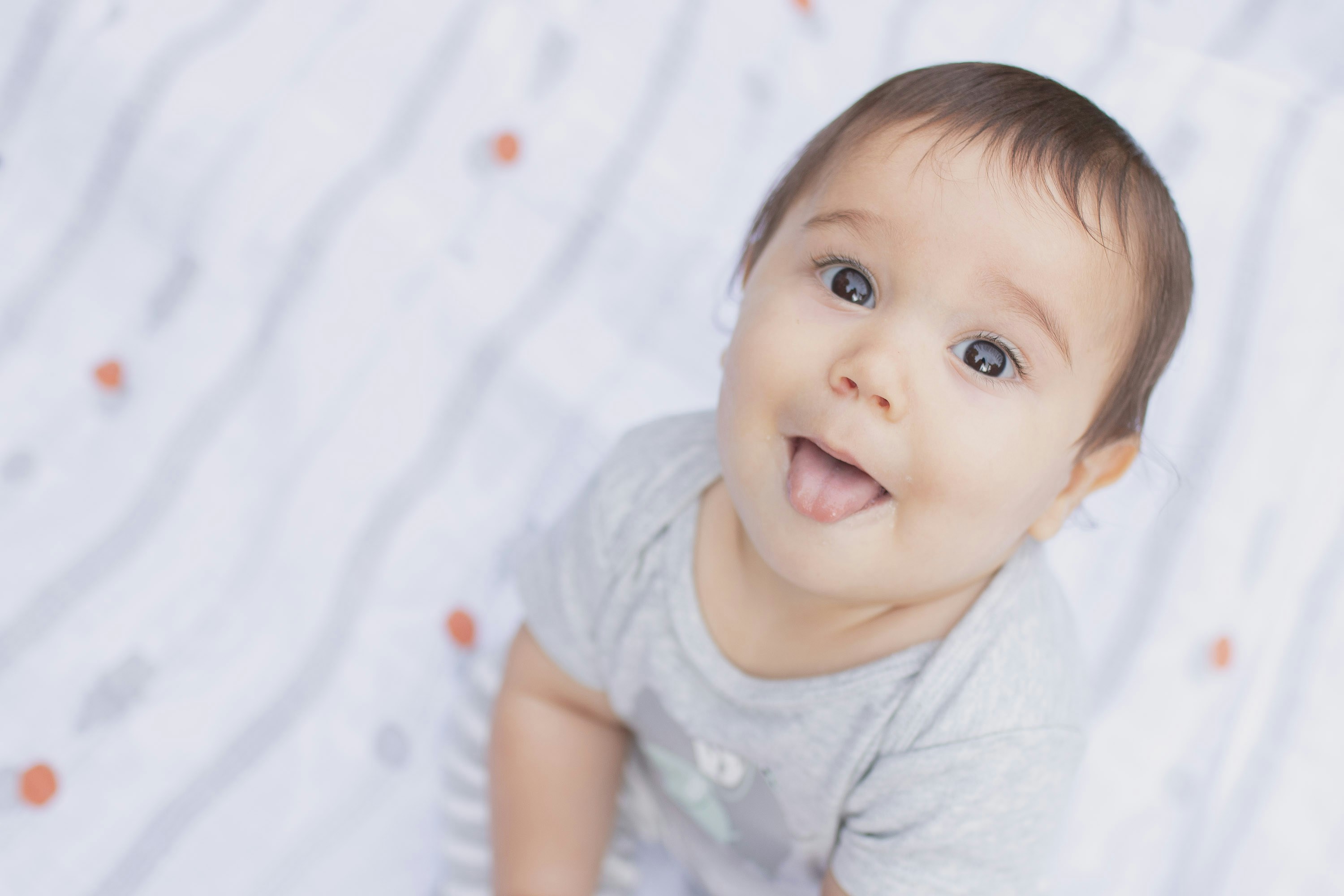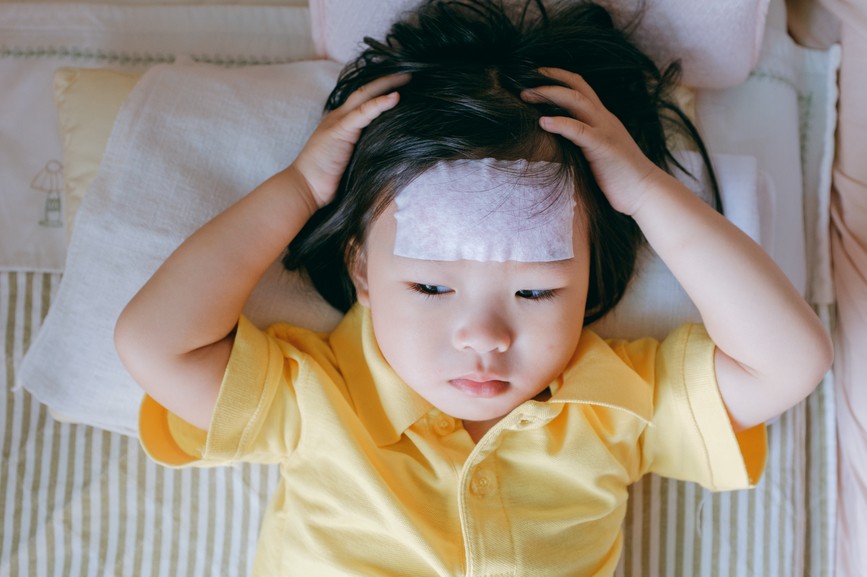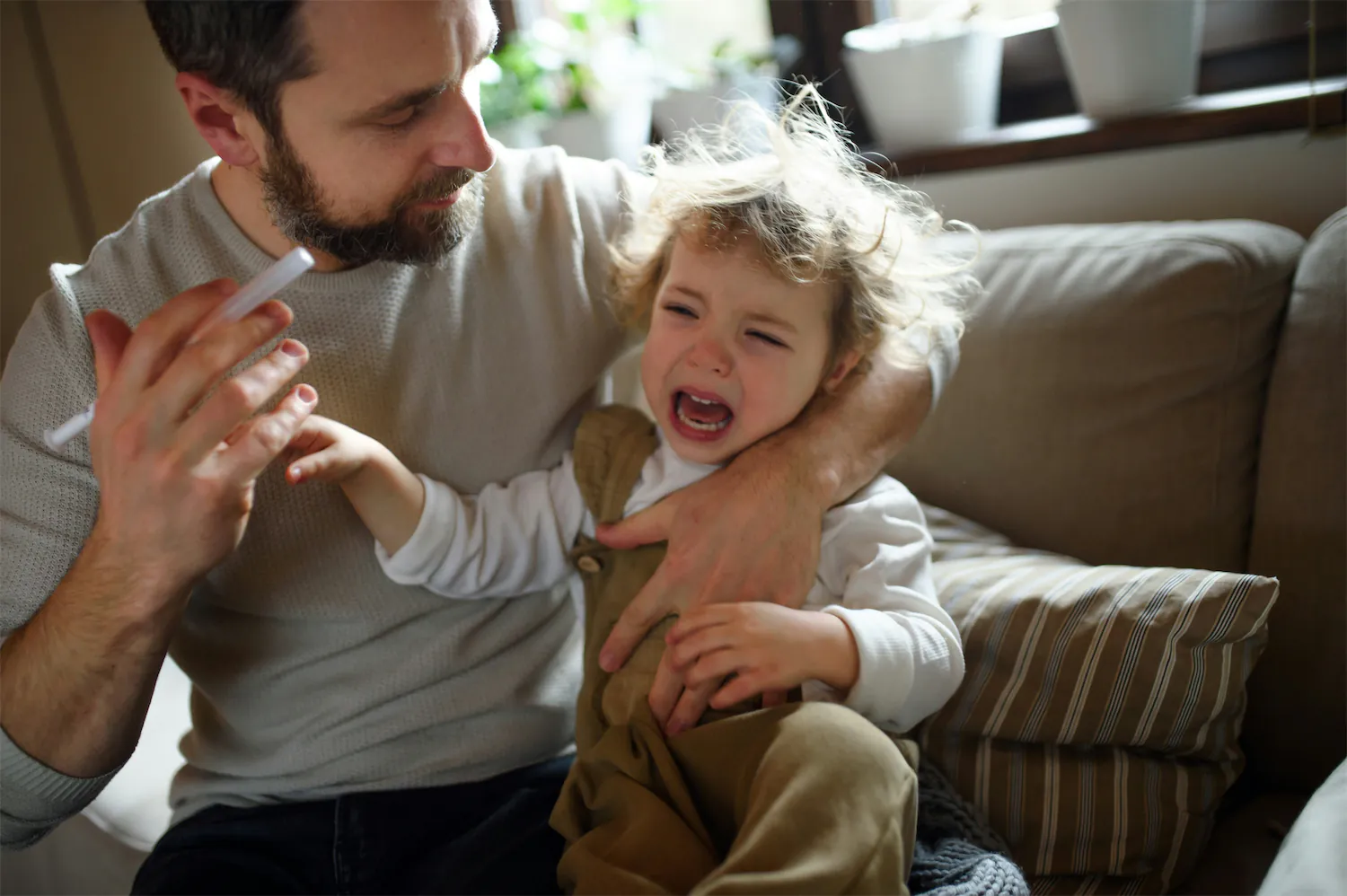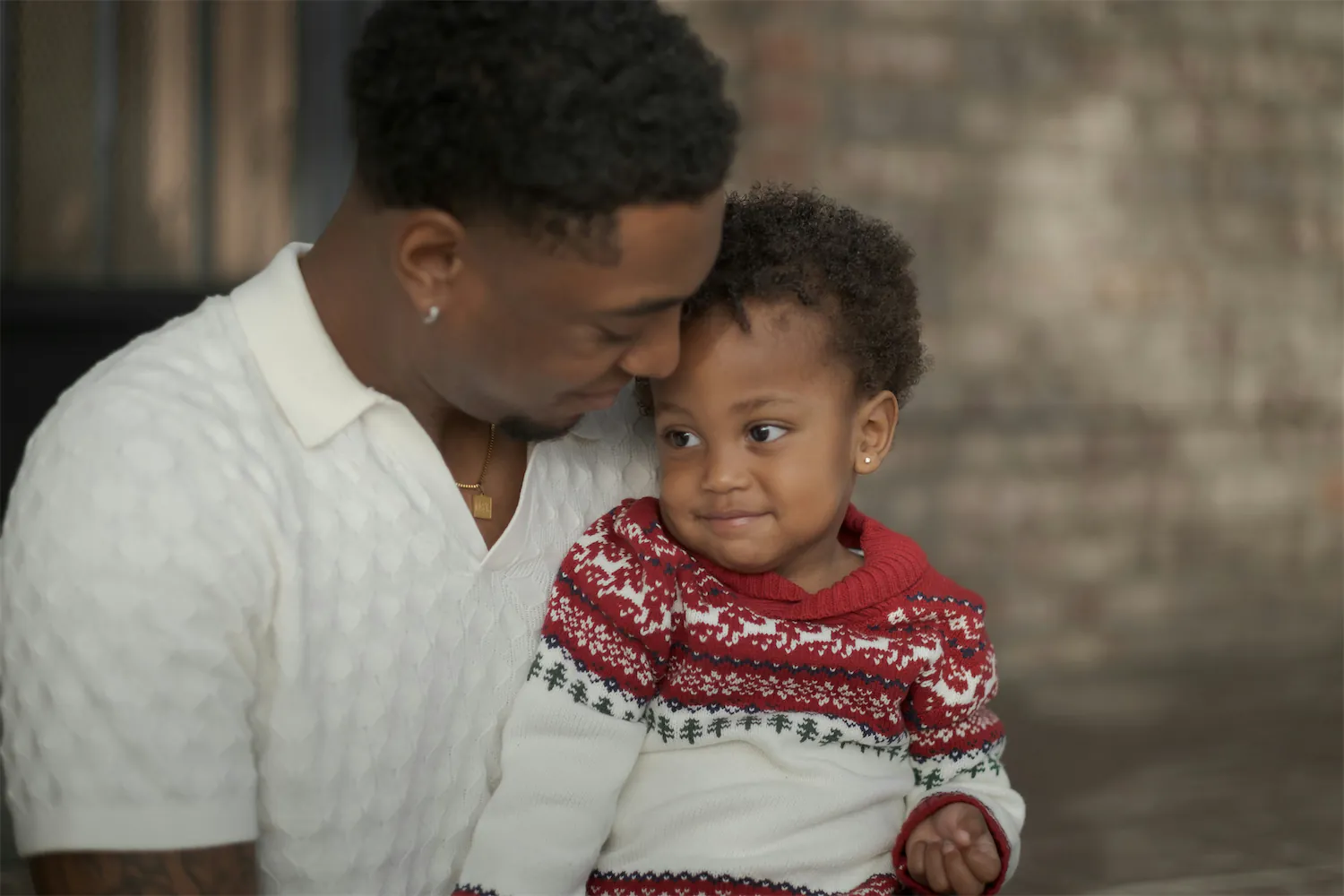Your questions, answered: Your child's fever
Your questions, answered: Your child's fever

Dahlia Rimmon, RDN
Content Writer

Dr. Marcy Borieux
Pediatrician
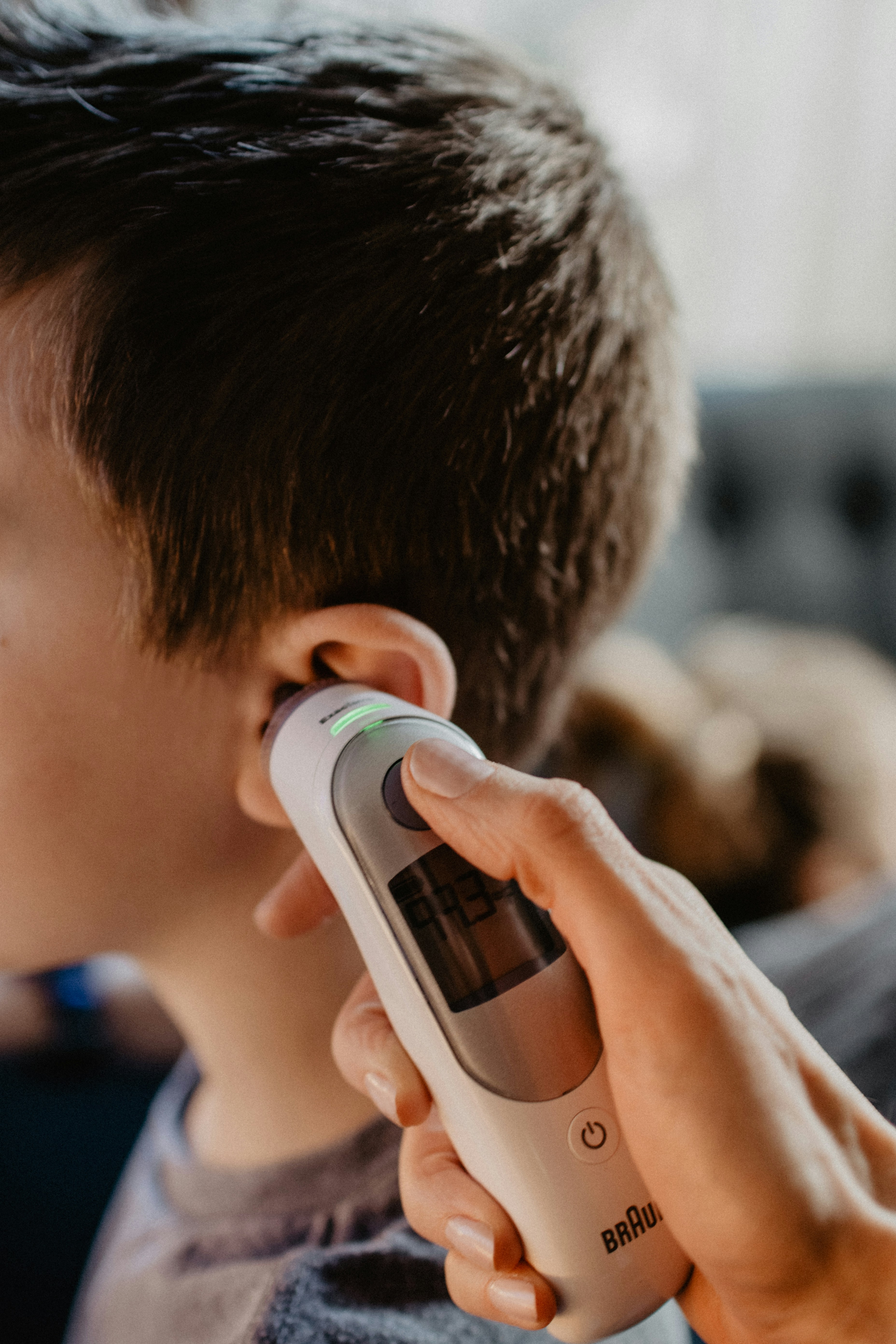


What’s a fever?
A fever is when the body’s normal temperature goes up, usually because the immune system is battling a germ. In other words, when our body detects an issue, our body turns up the heat, letting us know something is wrong.
What temperature range indicates a fever?
A body temperature of 100.4°F (or 38°C) or higher is considered a fever in children. To put that in perspective, a normal body temperature ranges from 96.4°F to 100.3°F (or 35°C to 37.9°C). So if your kiddo has a temperature of 100.4°F or higher, it’s time to reach out to your pediatrician.
Keep in mind that newborns and young babies have developing immune systems, so they may not always have a fever when they're sick. Instead, watch out for signs like fatigue, extreme crankiness, or poor feeding, which could mean they're not feeling their best.
What is a normal newborn temperature?
A normal body temperature — often simply called "normal temperature" — depends on how your baby's temperature is being taken.
Rectal reading: A reading of 98.6°F (37°C) is the average rectal temp. A normal low can be 96.8°F (36°C) in the morning. It can change to a high of 100.3°F (37.9°C) late in the day.
Mouth reading: A reading of 97.6°F (36.5°C) is the average mouth temp. A normal low can be 95.8°F (35.5°C) in the morning. It can change to a high of 99.9°F (37.7°C) late in the day.
Fever symptoms
Here are some other common symptoms of a fever:
Low energy and sleepiness
Irritability, crankiness, fussiness — all that fun stuff!
Rapid heart rate
Rapid/shallow breathing
Poor alertness
Shivering/chills
Poor feeding
What causes a fever in children?
Dr. Marcy shares a few common causes of fever.
Upper respiratory infection
If your kiddo has a cold or other viral infections like the flu, croup, or COVID-19, they may develop a fever. Along with a fever, your baby might have a cough, runny or stuffy nose, noisy breathing, fussiness, and trouble feeding.
Lower respiratory infections
Your child may catch viral bugs like RSV or bacterial infections which can lead to pneumonia in the lower respiratory tract. Along with a fever, your baby could have a severe cough, noisy breathing, rapid breathing, wheezing, poor feeding, and extreme sleepiness. These symptoms are serious, and your baby needs immediate in-person care.
Middle ear infections
Middle ear infections happen when fluid or congestion builds up in the middle ear, often due to cold symptoms. Sometimes, fluid can collect in the ear if your baby is fed in a reclined or horizontal position.
Newborn infections
Newborn infections often show up when infants are just a few days or weeks old. If your baby is unusually fussy, very sleepy, not feeding well, less alert, or has a fever, they need immediate medical attention, and should be taken to the emergency room.
Tummy bugs
Kids often catch stomach bugs, especially in the spring and summer. Since stomach bugs are usually viral, kids will get a fever, plus other symptoms like vomiting, diarrhea, fussiness, poor feeding, and fewer wet diapers. If your child is throwing up and having a lot of diarrhea, they could get dehydrated. Reach out to your child's pediatrician if you notice these symptoms or think they might be dehydrated.
How do pediatricians diagnose fevers?
Your pediatrician will use a digital thermometer to take your baby’s temperature. There are different digital thermometers – ones for the rectum, forehead, or an ear thermometer.
How are fevers treated in newborns? Older babies?
Newborns and young infants with fevers should receive immediate medical attention. For infant fevers, contact your pediatrician for further guidance and support.
Older babies and toddlers can safely take acetaminophen or ibuprofen (6+ months). Consult your pediatrician before administering acetaminophen or ibuprofen, especially if you have a child under 1 year.
Are there ways to prevent fevers?
The best way to prevent fevers is to prevent or limit infections. For newborns and young babies, the best preventative method is avoiding group activities or gatherings, crowded areas, or being in the presence of anyone with an infection. Parents should practice good hygiene and hand washing, or use hand sanitizer before caring for their baby.
For older babies and children, practicing and teaching good hand washing is key. It's also a good idea to avoid sharing cups or utensils and to stay away from people who are known to be contagious.
How can you provide comfort for your baby during a fever?
Encourage your child to drink plenty of fluids to stay hydrated, even if it's just small sips at a time. If they are 6 months or older and the fever is making them uncomfortable, you can give them fever reducers like acetaminophen or ibuprofen. And of course, give them lots of TLC!
What is a safe way to take your baby’s temperature at home?
For newborns and young infants, you can use a digital rectal thermometer to check the rectal temperature. Rectal thermometers are recommended because they provide a more accurate reading of your baby’s core temperature, or rectal temperature. Some rectal thermometers might need a bit of ointment, like petroleum jelly, on the tip before inserting it. Always check the manufacturer’s instructions before use.
How do I take a rectal temperature?
To insert a digital rectal thermometer, lay your baby on their back, gently lifting their legs towards their chest, and insert the rectal thermometer tip into the anus. Always clean and sanitize the rectal thermometer after each use, and use it only for rectal readings. Rectal temperatures are only appropriate for babies under 3 months.
What type of thermometer is best?
The best type of thermometer depends on your child’s age. For young infants, rectal thermometers are recommended, and for older infants and toddlers, you can use forehead, ear, or under-arm thermometers for a quick temperature check. For older kids, you can use an oral or forehead thermometer.
What’s a temporal artery thermometer?
A temporal artery thermometer is used at the forehead or temporal area (sides of the forehead) to estimate the temperature waves from the temporal artery. If you have a temporal artery thermometer, be sure to follow the instructions for accurate use.
What are febrile seizures and how are they related to fevers?
Typically, febrile seizures are seizures in babies 6 months to children 5 years of age. Febrile seizures can be caused by any illness or infection that causes a fever. Research suggests that febrile seizures are hereditary. If you have a family history of febrile seizures, be sure to contact your pediatrician for guidance. Any seizure requires immediate medical attention.
At what point should you consult your pediatrician?
Consult your pediatrician for any fever in babies 2 months of age or younger.
What are safe medications for infant fevers?
Acetaminophen can be used as needed for a fever in any age group. Ibuprofen can be used for infants 6 months or older.
How can parents treat and prevent dehydration in babies?
Fevers can cause the body to lose fluids quickly, so your baby can be at risk for dehydration. If your child has a fever, it’s important to keep them well-hydrated by encouraging fluids. If your baby is breastfeeding, for example, try to nurse more often to decrease their risk of dehydration. If your baby isn’t feeding well, is lethargic, less alert, or having fewer wet diapers, contact your pediatrician for additional dehydration concerns.
What’s a fever?
A fever is when the body’s normal temperature goes up, usually because the immune system is battling a germ. In other words, when our body detects an issue, our body turns up the heat, letting us know something is wrong.
What temperature range indicates a fever?
A body temperature of 100.4°F (or 38°C) or higher is considered a fever in children. To put that in perspective, a normal body temperature ranges from 96.4°F to 100.3°F (or 35°C to 37.9°C). So if your kiddo has a temperature of 100.4°F or higher, it’s time to reach out to your pediatrician.
Keep in mind that newborns and young babies have developing immune systems, so they may not always have a fever when they're sick. Instead, watch out for signs like fatigue, extreme crankiness, or poor feeding, which could mean they're not feeling their best.
What is a normal newborn temperature?
A normal body temperature — often simply called "normal temperature" — depends on how your baby's temperature is being taken.
Rectal reading: A reading of 98.6°F (37°C) is the average rectal temp. A normal low can be 96.8°F (36°C) in the morning. It can change to a high of 100.3°F (37.9°C) late in the day.
Mouth reading: A reading of 97.6°F (36.5°C) is the average mouth temp. A normal low can be 95.8°F (35.5°C) in the morning. It can change to a high of 99.9°F (37.7°C) late in the day.
Fever symptoms
Here are some other common symptoms of a fever:
Low energy and sleepiness
Irritability, crankiness, fussiness — all that fun stuff!
Rapid heart rate
Rapid/shallow breathing
Poor alertness
Shivering/chills
Poor feeding
What causes a fever in children?
Dr. Marcy shares a few common causes of fever.
Upper respiratory infection
If your kiddo has a cold or other viral infections like the flu, croup, or COVID-19, they may develop a fever. Along with a fever, your baby might have a cough, runny or stuffy nose, noisy breathing, fussiness, and trouble feeding.
Lower respiratory infections
Your child may catch viral bugs like RSV or bacterial infections which can lead to pneumonia in the lower respiratory tract. Along with a fever, your baby could have a severe cough, noisy breathing, rapid breathing, wheezing, poor feeding, and extreme sleepiness. These symptoms are serious, and your baby needs immediate in-person care.
Middle ear infections
Middle ear infections happen when fluid or congestion builds up in the middle ear, often due to cold symptoms. Sometimes, fluid can collect in the ear if your baby is fed in a reclined or horizontal position.
Newborn infections
Newborn infections often show up when infants are just a few days or weeks old. If your baby is unusually fussy, very sleepy, not feeding well, less alert, or has a fever, they need immediate medical attention, and should be taken to the emergency room.
Tummy bugs
Kids often catch stomach bugs, especially in the spring and summer. Since stomach bugs are usually viral, kids will get a fever, plus other symptoms like vomiting, diarrhea, fussiness, poor feeding, and fewer wet diapers. If your child is throwing up and having a lot of diarrhea, they could get dehydrated. Reach out to your child's pediatrician if you notice these symptoms or think they might be dehydrated.
How do pediatricians diagnose fevers?
Your pediatrician will use a digital thermometer to take your baby’s temperature. There are different digital thermometers – ones for the rectum, forehead, or an ear thermometer.
How are fevers treated in newborns? Older babies?
Newborns and young infants with fevers should receive immediate medical attention. For infant fevers, contact your pediatrician for further guidance and support.
Older babies and toddlers can safely take acetaminophen or ibuprofen (6+ months). Consult your pediatrician before administering acetaminophen or ibuprofen, especially if you have a child under 1 year.
Are there ways to prevent fevers?
The best way to prevent fevers is to prevent or limit infections. For newborns and young babies, the best preventative method is avoiding group activities or gatherings, crowded areas, or being in the presence of anyone with an infection. Parents should practice good hygiene and hand washing, or use hand sanitizer before caring for their baby.
For older babies and children, practicing and teaching good hand washing is key. It's also a good idea to avoid sharing cups or utensils and to stay away from people who are known to be contagious.
How can you provide comfort for your baby during a fever?
Encourage your child to drink plenty of fluids to stay hydrated, even if it's just small sips at a time. If they are 6 months or older and the fever is making them uncomfortable, you can give them fever reducers like acetaminophen or ibuprofen. And of course, give them lots of TLC!
What is a safe way to take your baby’s temperature at home?
For newborns and young infants, you can use a digital rectal thermometer to check the rectal temperature. Rectal thermometers are recommended because they provide a more accurate reading of your baby’s core temperature, or rectal temperature. Some rectal thermometers might need a bit of ointment, like petroleum jelly, on the tip before inserting it. Always check the manufacturer’s instructions before use.
How do I take a rectal temperature?
To insert a digital rectal thermometer, lay your baby on their back, gently lifting their legs towards their chest, and insert the rectal thermometer tip into the anus. Always clean and sanitize the rectal thermometer after each use, and use it only for rectal readings. Rectal temperatures are only appropriate for babies under 3 months.
What type of thermometer is best?
The best type of thermometer depends on your child’s age. For young infants, rectal thermometers are recommended, and for older infants and toddlers, you can use forehead, ear, or under-arm thermometers for a quick temperature check. For older kids, you can use an oral or forehead thermometer.
What’s a temporal artery thermometer?
A temporal artery thermometer is used at the forehead or temporal area (sides of the forehead) to estimate the temperature waves from the temporal artery. If you have a temporal artery thermometer, be sure to follow the instructions for accurate use.
What are febrile seizures and how are they related to fevers?
Typically, febrile seizures are seizures in babies 6 months to children 5 years of age. Febrile seizures can be caused by any illness or infection that causes a fever. Research suggests that febrile seizures are hereditary. If you have a family history of febrile seizures, be sure to contact your pediatrician for guidance. Any seizure requires immediate medical attention.
At what point should you consult your pediatrician?
Consult your pediatrician for any fever in babies 2 months of age or younger.
What are safe medications for infant fevers?
Acetaminophen can be used as needed for a fever in any age group. Ibuprofen can be used for infants 6 months or older.
How can parents treat and prevent dehydration in babies?
Fevers can cause the body to lose fluids quickly, so your baby can be at risk for dehydration. If your child has a fever, it’s important to keep them well-hydrated by encouraging fluids. If your baby is breastfeeding, for example, try to nurse more often to decrease their risk of dehydration. If your baby isn’t feeding well, is lethargic, less alert, or having fewer wet diapers, contact your pediatrician for additional dehydration concerns.
Summer Health offers fast and reliable pediatric urgent care through online doctors, all via text. Whether you’re worried about your baby's fever, rashes, or other children's health concerns, we provide expert advice and support anytime, right from your phone.

Never miss a post!
Sign up for our newsletter to receive articles and guides directly to your inbox!
